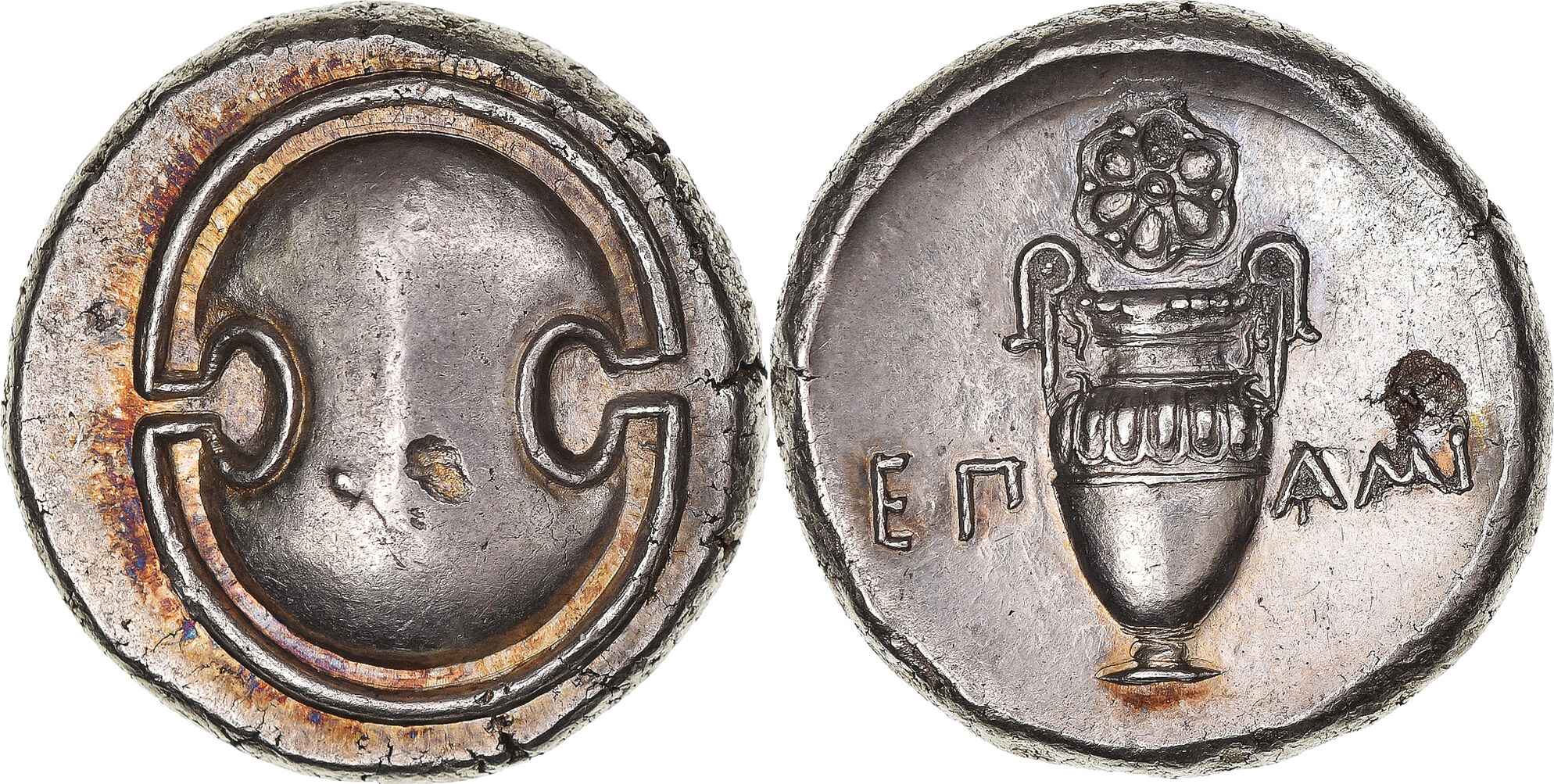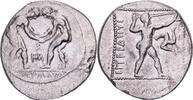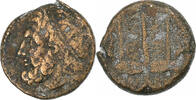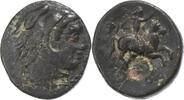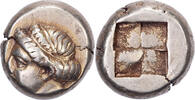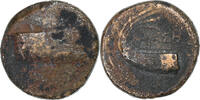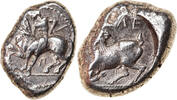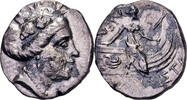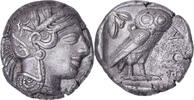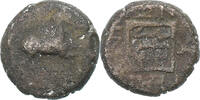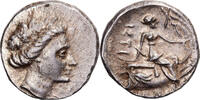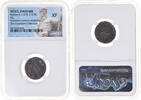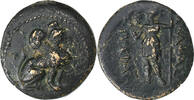MA-ID: 106818800158
Customer feedback CDMA
Tutto ok - Grazie
Everything OK, good seller
Wish all ma shops we're as dependable as yours.Ed Fowler
Parfait, transaction conforme et correcte
Stater ca. 364-362 BC Thebes Boeotia, Epaminondas, Thebes, Silver, NGC, Ch AU 4/5 4/5 Ch AU 4/5-4/5
Comptoir des Monnaies 

15
On MA-Shops since 15 years
45284 ratings,
99,7 % Positive (last 24 months)
Worldwide shipping
8,236.03 £9500,00 EUR
Import tax may be added
+ 4.29 £ shipping ( to United Kingdom )
Delivery time: 8 - 12 days
+ 4.29 £ shipping ( to United Kingdom )
| Customer Support +49 (0)2871 2180 383 |
| Payment methods |
| Wire Transfer |
Thebes
Thebes
Epaminondas
NGC
Boeotian shield., Amphora with rosette above, all within concave circle., Graded NGC Ancients Ch AU Strike: 4/5 Surface: 4/5 Flan flaws. Beautiful specimen, having been cleaned but beautifully repatinated with powerful golden tones, particularly around the Beotian shield! The 5 letters of the magistrate's name are clearly visible, which is rare. Unfortunately, we must point out two flan breaks, one on the shield and another on the reverse to the right of the amphora. The flan is quite thick, but very cracked slightly when struck at 3h. Note that the reverse die has been re-engraved and originally indicated the magistrate's name EΠ-ΠA, the letters ΠA are still clearly legible under AM. The reuse of the reverse die is also evident from the numerous small breaks in the rose petals, as well as in the amphora's handles. Recent studies suggest that this coinage is attributable to the famous Theban general and statesman Epaminondas, who died at the Battle of Mantinea in 362 BC, where the Thebans and Spartans fought for hegemony over Central Greece. The man is remembered for the crucial role he played in the rise of Thebes as a major Greek city in the first half of the 4th century BC. However, his death led to the decline of the city, without this skilful politician and without his successors who died on the same day. Thebes made peace with its enemies, unable to exploit its victory, thus paving the way for Philip II of Macedonia to conquer the regions and cities then allied with Thebes, starting with Thessaly around 352 BC, towards complete domination in 338 BC with the battle of Chaeronea. Hepworth, Epaminondas pl. 3, 3 (same rev. die); Hepworth 32 (same rev. die); BCD Boiotia 543 (same dies); HGC 4, 1333; Traité III 267, pl. CCI, 16 (same rev. die). From the Pythagoras Collection. Ex CNG Triton XIII, 5 January 2010, lot 1201., EΠ-AMI
NGC certificate number: 6639646-006
Info / FAQ
| Shipping fees | |
|---|---|
| France | 4.29 £ |
| United States | 21.67 £ |
| European Union | 4.29 £ |
| World | 4.29 £ |
Information
Online orders are welcome as always and will be shipped directly.
|
Seller Home | 0Shopping cart | Terms of sale | Contact | MA Terms of sale | Privacy policy | Warranty | MA-Shops New Items Copyright ® 2001-2025, MA-SHOPS Coins All Rights Reserved. Designated trademarks and brands are the property of their respective owners. |
 Buy coins with warranty
Buy coins with warranty



